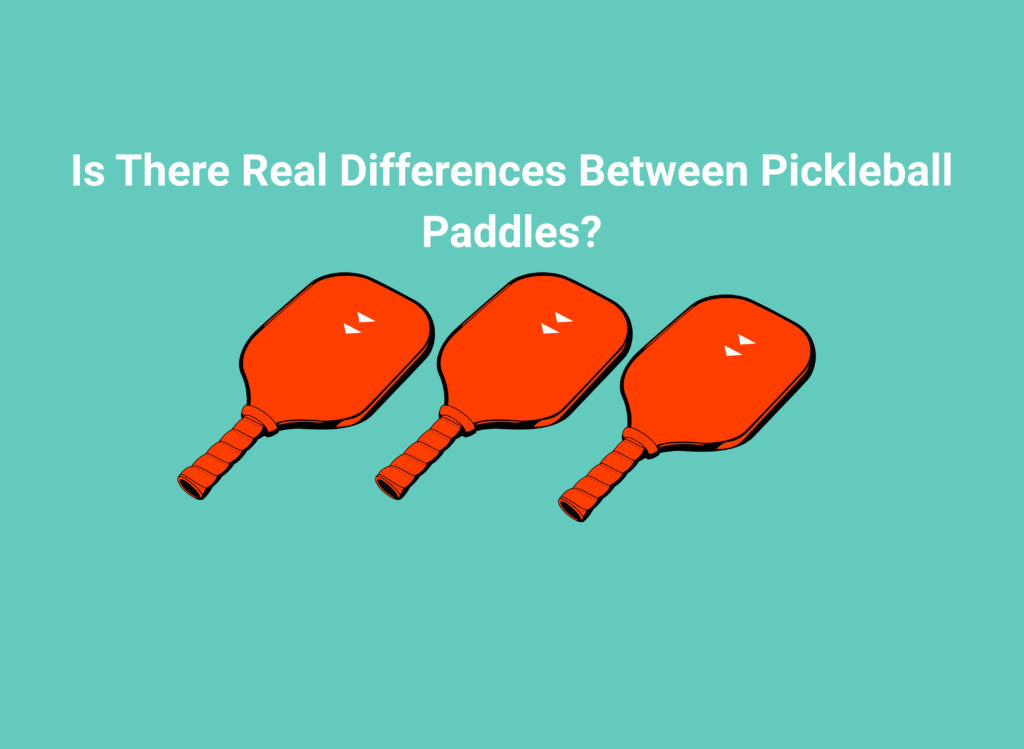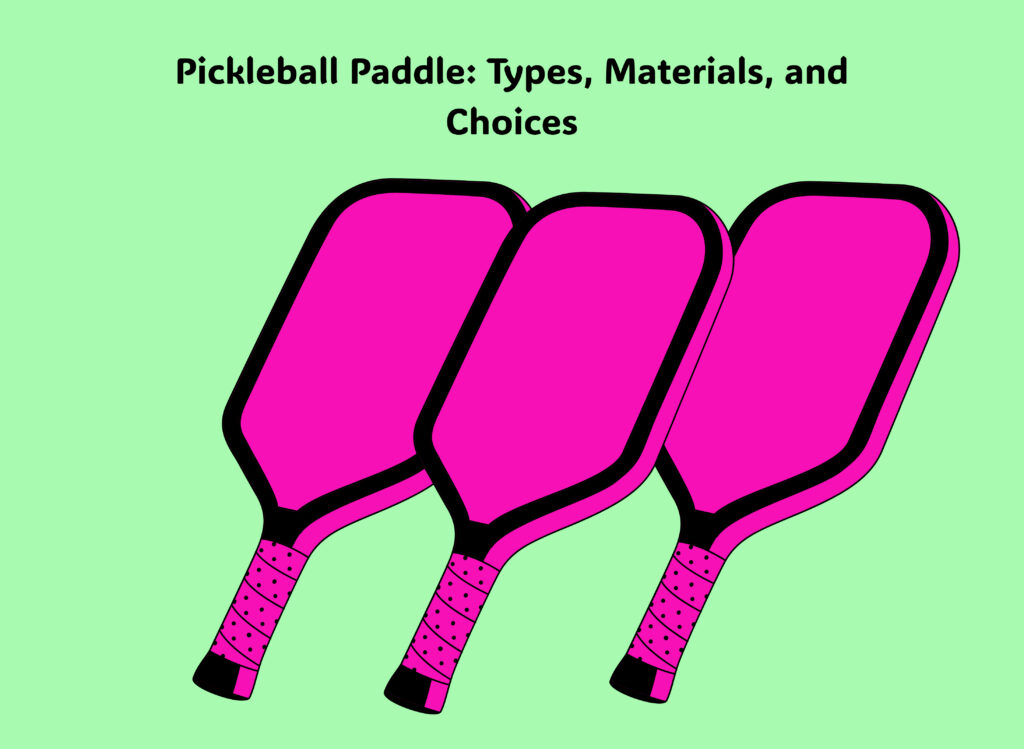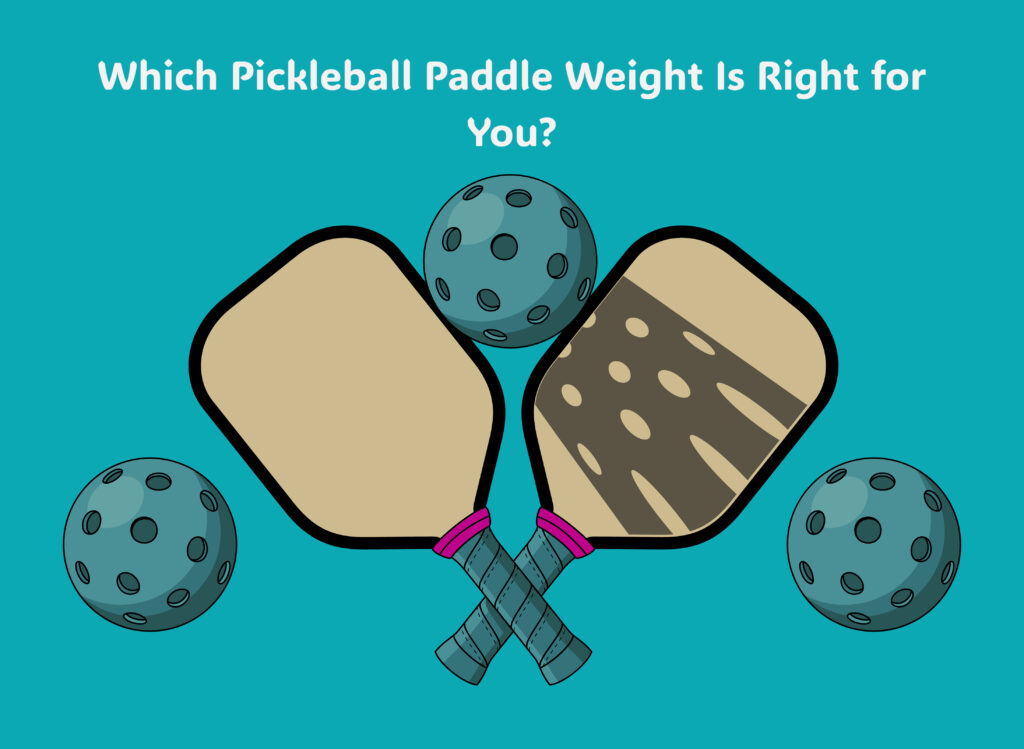Differences Between Pickleball Paddles?
Discover the real differences between pickleball paddles. Learn how materials, weight, shape, and grip impact your game. Read our UK guide to choosing the right paddle.
Table of Contents
- Introduction
- 1. Paddle Materials
- 2. Weight Differences
- 3. Shape and Size
- 4. Grip Size
- 5. Price vs. Performance
- 6. More Resources for UK Players
- Conclusion
Introduction to the Differences Between Pickleball Paddles
Pickleball has seen explosive growth across the UK over the last few years, with more clubs forming, more courts opening, and more players of all ages picking up a paddle. Whether you’re joining a local club, playing casually with friends, or diving into competitive tournaments, one of the first and most important pieces of equipment you’ll encounter is the pickleball paddle. At a glance, many paddles might look quite similar. They often come in standard shapes, feature glossy surfaces, and range in price without any immediately obvious reason. So, it’s a common and valid question among new players: is there really a difference between these paddles, or is it just marketing hype and branding?
The truth is, not all paddles are created equal. In fact, subtle variations in materials, weight, grip, and shape can have a significant impact on how a paddle performs in your hand. This is especially true in the UK, where court surfaces vary (from indoor wooden floors to outdoor hard courts), and where local weather conditions can subtly affect gameplay, especially if you’re playing outside.
Understanding these paddle characteristics isn’t just for the pros—it’s important for everyone. The wrong paddle can hinder your learning curve, make your shots inconsistent, or even cause discomfort or injury over time. Conversely, the right paddle can help you develop proper technique, improve your timing, and give you better control over your play. From power and spin to finesse and responsiveness, everything about your paddle contributes to your performance.
In this guide, we’ll walk you through all the key differences between paddles, explain how they affect your game, and help you make informed choices when buying your next paddle. Whether you’re shopping online, browsing in a sports store, or testing a friend’s gear at the club, knowing what to look for can make all the difference. The goal of this blog is not just to highlight the technical details, but to relate them to the actual experience of playing pickleball in the UK. By the end, you’ll know exactly why paddle choice matters and how to find one that suits your skill level, play style, and budget. Let’s break it all down and find the paddle that’s perfect for you.
Pickleball Paddle Comparison
1. Paddle Materials
Understanding paddle materials is essential to choosing the right gear, particularly as a UK player where indoor and outdoor court surfaces, ball speed, and climate conditions add extra dimensions to your decision. The core and face materials are two of the most influential elements in determining a paddle’s performance, feel, and durability. Core materials generally include polymer, Nomex, and aluminium. Polymer has become the most popular core type due to its soft, quiet touch. Nomex provides a denser, firmer feel, resulting in more pop and speed. Aluminium cores are lightweight and offer excellent manoeuvrability but are more susceptible to damage.
The face or surface of the paddle is equally critical. Graphite faces are known for their responsiveness and enhanced control, making them a great choice for players focused on dinking and precision. Fibreglass faces generate more power and tend to have a slightly heavier feel. Hybrid surfaces are becoming popular, offering a mix of touch and power. The texture and grit of the paddle surface play a role in spin generation and ball bite, particularly in damp UK conditions.
Match material characteristics to your personal style. Beginners might prefer polymer core with fibreglass face, while advanced players may opt for graphite on Nomex. For more on paddle construction, visit our Pickleball Equipment Guide. Or see the Paddletek Buyer’s Guide.
Core Material Comparison
Core Materials
- Polymer: Quiet, soft feel, great for control.
- Nomex: Hard, loud, powerful.
- Aluminium: Lightweight, manoeuvrable, less durable.
Face Materials
- Graphite: Excellent touch and responsiveness.
- Fibreglass: Adds power and pop.
Why it matters: The combination of core and face materials influences feel, control, and power.
2. Weight Differences
Pickleball paddles typically range from 6 to 9 ounces (170 to 255 grams). While this may seem like a small variation, it can significantly impact your game. Lightweight paddles (6–7.3 oz) are favoured for their control and quick response, ideal for net play and dinks. Midweight paddles (7.3–8.4 oz) offer a balanced mix of power and control, making them popular among intermediate players. Heavy paddles (8.5 oz and above) are designed for power but may cause fatigue during extended play, especially for players with elbow issues.
Balance also plays a role. Head-heavy paddles generate more swing momentum, while evenly balanced paddles provide stability and better manoeuvrability. Try different weights during demos to see what feels best. Accessories like edge guards or overgrips can also affect final weight. UK players should factor in court conditions—indoor games may benefit from lighter paddles, while outdoor play might require extra power.
Check out our Best Pickleball Paddles UK for comparisons. Or explore Pickleball Central’s weight guide.
Pickleball Paddle Weight Chart
- Lightweight: 6–7.3 oz – great control, fast reactions.
- Midweight: 7.3–8.4 oz – balance of control and power.
- Heavyweight: 8.5+ oz – added power, risk of fatigue.
UK Tip: Tennis and squash players may prefer mid to heavy paddles for a familiar feel.
3. Shape and Size
Paddle shape significantly impacts gameplay. Standard paddles (15.5–16 in x 7.5–8 in) provide balanced performance, making them ideal for most players. Elongated paddles (up to 17 in long) offer extra reach and power but sacrifice width and forgiveness. Wide body paddles maximise surface area and sweet spot, great for beginners and casual players who want consistency.
UK players often move between indoor and outdoor courts, so selecting a shape that adapts to varied environments is key. Windy outdoor conditions might benefit from a wider face, while indoor matches in tight spaces may benefit from elongated paddles for reach. Paddle manufacturers also innovate with aerodynamic head shapes and tapered edges to reduce air drag.
Review our UK Paddle Buying Guide for comparisons. Also, see Net World Sports’ paddle guide for visuals and specs.
Pickleball Paddle Shape Comparison
- Standard: Balanced and versatile.
- Elongated: Extra reach, suited for aggressive players.
- Wide body: Large sweet spot, beginner-friendly.
Why it matters: Shape influences control, reach, and forgiveness on off-centre hits.
4. Grip Size
Grip size is critical for comfort and control. Too small a grip can lead to over-gripping, causing fatigue and poor accuracy. Too large, and you’ll lose wrist mobility. Common sizes range from 4.0 to 4.5 inches. Small grips offer more wrist action, aiding spin and net play. Medium grips (4.25–4.375 in) suit most players, offering balance. Large grips provide stability for power shots but limit finesse.
UK players should factor in playing frequency and indoor vs outdoor sessions. Extended play or wet outdoor conditions may benefit from a slightly larger grip for extra security. To test grip size, hold the paddle in an Eastern grip (like a handshake). If your index finger fits snugly between your fingers and palm, the size is likely right.
Explore our UK Grip Size Guide or read Pickleball Central’s Grip Guide.
Pickleball Grip Size Guide
- Small: 4.0–4.125 in – better wrist action, more control.
- Medium: 4.25–4.375 in – versatile and common.
- Large: 4.5+ in – stable grip, great for power shots.
Quick Test: Use the Eastern grip method to determine proper fit.
5. Price vs. Performance
While budget is a major consideration, price often reflects paddle quality. Cheaper paddles use lower-grade materials and have inconsistent weight distribution, which can hinder control and durability. High-end paddles use advanced materials like carbon fibre and polymer cores that improve balance, comfort, and power transfer.
UK players benefit from durable paddles that withstand mixed conditions. Investing in a quality paddle ensures a consistent feel, better grip, and reliable performance. However, casual players may do well with well-reviewed mid-tier paddles. Consider how often you play, your intensity, and whether you compete.
Try demo paddles at local clubs or shops before buying. Check out our list of Best Value Pickleball Paddles in the UK. For global options, visit Pickleball Central’s Paddle Guide.
- Budget Paddles: Basic functionality, limited lifespan.
- Mid-tier: Balanced quality and cost for regular players.
- Premium: Optimised for feel, power, and longevity.
Pro Tip: Think of your paddle as an investment in comfort and performance.
6. More Resources for UK Players
Staying informed about paddle options and community tools helps UK players improve and stay engaged. DinkQuest offers a range of articles covering court directories, brand reviews, and gear comparisons tailored for UK audiences. For beginners or those comparing paddle sports, our resources offer practical insights.
- Pickleball vs Padel: Which is Better? – Compare court size, gear, and game style.
- UK Pickleball Court Directory – Find courts nationwide.
- Top UK Pickleball Brands – Leading UK brands and where to buy.
For expert third-party guides, see:
- Paddletek Buyer’s Guide – Insights from a leading global paddle maker.
- Pickleball Central Paddle Guide – Reviews and comparison tools.
- Net World Sports UK Guide – UK-specific paddle buying help.
These references offer comprehensive insights to help UK players make well-informed equipment decisions.
Conclusion on the main Differences Between Pickleball Paddles
Yes, there really is a difference between pickleball paddles. Everything from materials and weight to grip size and shape affects how a paddle feels and performs. For UK players, taking the time to find the right paddle pays off—both in terms of enjoyment and progression. Whether you’re a beginner or advancing in skill, choosing the right paddle can help prevent injury, enhance control, and refine your playing style.
Explore more paddle reviews, gear tips, and UK-specific resources. With the right paddle in hand, you’ll be more confident and competitive on the court.
Looking for the best paddle for your playstyle? Visit DinkQuest.com for expert reviews, UK stockists, and top pickleball gear recommendations.



